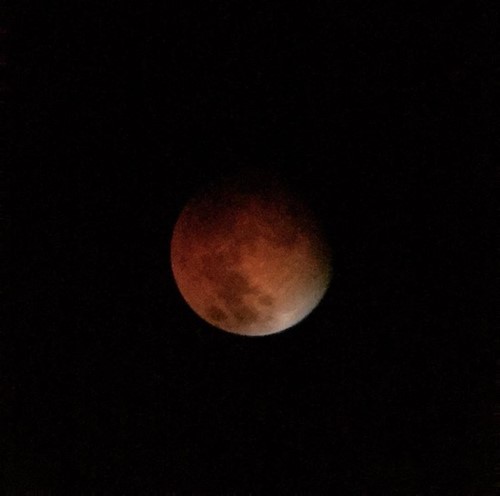Simple Astrophotography with a Phone or Camera
Astrophotography need not be expensive or complicated.
The simplest approach is 'afocal imaging' - this is the easiest technique for taking photographs with a telescope. Indeed, it couldn’t be simpler in principle – you just take a photo of what you can see through the scope. This has two nice advantages – it’s very simple to do and it also allows you to enjoy both visual observing and imaging together. The disadvantage is that it only works with relatively bright objects like the Moon, planets and bright stars. This picture of a Lunar Eclipse was taken by 15-year-old Amelia Wyatt using a phone camera and a £70 Bresser telescope

Any ‘ordinary’ camera can be used but the ideal one is light, has a relatively small lens and is quite light sensitive – yes, this is where compact digital and especially good quality phone cameras excel!
When you take a picture of a landscape or person using a ‘standard lens’ the camera reproduces more or less the same view as your eye can see, so when you point a camera through the already focused eyepiece of the telescope it takes a picture of what you can see.
Although the name suggests that this is taking a photograph without focusing, in reality what you do is focus the telescope so the image appears to be at infinity and then take the photo with the camera focused at infinity. Now this is ideal for small lenses with great depth of field cameras like those on telephones, and many people have taken great images in this way.
There is one gotcha – for glasses wearers. If you take off your glasses to focus, the camera may not be able to compensate for the difference. It’s best to wear your (distance) glasses for the observing part to give the camera the best possible chance of achieving focus.
For bright objects, like the moon and planets like Jupiter, Venus, Mars and Saturn you can simply hold a phone up to the eyepiece.
Though most compact and phone cameras won’t do very long exposures some can be used for fainter objects if you invest in (or make) a simple cradle that holds the lens to the scope eyepiece. Inexpensive cradles are sold to birdwatchers for ‘digiscoping’ and these usually allow you to quickly fold the camera back to look though the eyepiece then reposition it for a picture.
These days most cameras have the ability to take quality video, if you use the best quality setting then even if you hand-hold the camera to the eyepiece you have a fighting chance of getting a decent number of good frames. These can be processed and stacked to greatly enhance the details.
